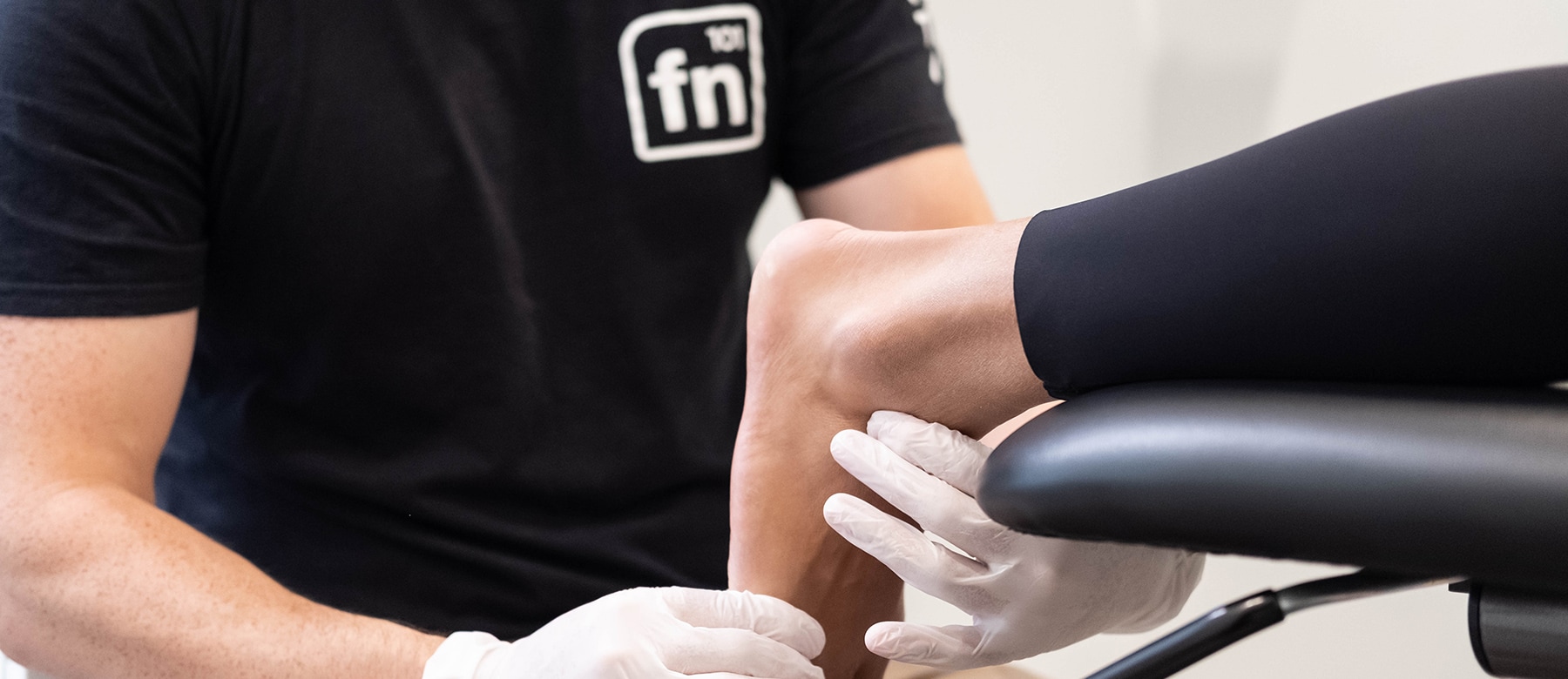What is a Chiropodist and when should I see one?

Chiropodists are primary health care practitioners that specialize in assessing and treating diseases or disorders of the foot. Chiropodists are trained to assess and treat several types of skin and nail conditions, including athlete’s foot, psoriasis, eczema and verruca pedis (commonly known as a plantar wart). Foot pain, acute and chronic injuries can also be treated by a Chiropodist. A doctor’s referral is not necessary to visit a Chiropodist and their services are covered by most private insurers in Ontario.
If you think you might be suffering from a foot problem, a Chiropodist may be able to help!
What is the difference between a Chiropodist and a Podiatrist?
This is a commonly asked question when seeking foot care advice! Chiropody and Podiatry share many similarities and require several years of training. These specialties focus on the treatment and prevention of diseases or disorders of the foot. Prospective podiatrists typically train in the U.S. or other countries that offer this program, however there is one Francophone podiatry school in Quebec. Aspiring chiropodists generally train in Ontario or the United Kingdom. Podiatrists generally develop their surgical skills in a residency program once they have completed their podiatry degree, which is the key distinction between the professions. Chiropodists can perform minimally invasive surgeries that do not involve the bones of the foot. The bottom line is that both professionals are the most qualified to assess and treat foot and ankle conditions.
What happens during a Chiropody consultation?
An intake form will need to be filled out prior to your appointment so the Chiropodist has a full picture of your medical history. This can be done online before your appointment to save you time. Chris, our chiropodist, will ask you some questions to gather more pertinent information about your chief complaint. Once all the necessary history is gathered, a comprehensive vascular, neurological, musculoskeletal and dermatological assessment is completed to determine proper treatment. If necessary, a gait and running analysis can be performed to pinpoint any movement patterns that might be related to ongoing discomfort in the feet, legs or lower back.
What conditions do Chiropodist’s treat?

What type of interventions can a Chiropodist do?
Corns & Callouses can typically be treated with sharp debridement with or without topical medications. These types of lesions are usually caused by bony prominences, abnormal movement patterns poor footwear choices. Unless the underlying cause of the lesion is identified and treated, these lesions will typically come back within 6 to 12 weeks. Corns are typically more painful and causes my compressional forces, whereas callouses are diffuse, hard layers of skin caused by friction/shearing forces. Callouses can also be painful if they are severe or left untreated.
Nail conditions can be treated in the office with specialized instruments that the Chiropodist has been trained to use. If necessary, a nail burr can be used to grind the nail to an appropriate thickness to reduce pressure on the surrounding skin. Sometimes this needs to be done when the patient has distorted nails that are related to systemic diseases or previous toenail trauma. Fungal nail infections can also cause the nail to become thick, crumbly and discoloured. Ingrown toe nails are a common problem Chiropodists see in the office and they can be treated conservatively or aggressively, depending on the history. Several causes exist for this painful condition including genetic factors, tight footwear, improper foot mechanics, among many others. If conservative measures fail, a surgical procedure known as a nail avulsion can be done to permanently remove a portion or the entirety of the nail.
Skin conditions such as fungal skin infections, eczema/dermatitis, psoriatic plaques, cellulitis and other bacterial skin infections are usually treated by a Chiropodist using topical or oral prescription medications. Patient education and lifestyle modifications are also important to prevent recurrence.
Foot pain + sports injuries are extremely common in the Chiropody clinic. Acute and chronic conditions such as plantar fasciitis, gout, ankle sprains, osteoarthritis, fractures, ligament sprains and muscle strains can be treated by the Chiropodist using individualized management plans. Custom foot orthotics and rehabilitation programs are just a couple of conservative treatment options available for foot pain. In special cases, injection therapy or soft-tissue surgeries can be performed.
Auto-immune diseases such as rheumatoid arthritis, psoriatic arthritis, ankylosing spondylitis and many others require ongoing foot care to prevent rapid deterioration of structures in the feet. Patients that are living with Type 1 and 2 Diabetes should also see a Chiropodist annually to be screened for common nerve, skin and vascular changes that can arise with this disease. Diabetics living with diabetic neuropathy – or damage to the nerves – are extremely prone to developing foot infections or ulcerations because the ability to detect outside forces acting on the foot becomes diminished. Ulcerations are often encountered in the clinic, which can be managed with ongoing wound care and offloading interventions.

Thank you!
Thank you Chris for taking the time to share your knowledge with us here so we can all learn how to help those clients out there experiencing foot pain/foot-related issues.
Hopefully you’ve found this blog post helpful to answer some of the frequently asked questions about what a Chiropodist is all about!
If you have any further questions, ask us, we’d love to hear from you! Feel free to reach us at info@function101.ca or hit up @function101chris directly for any of your foot related questions!



